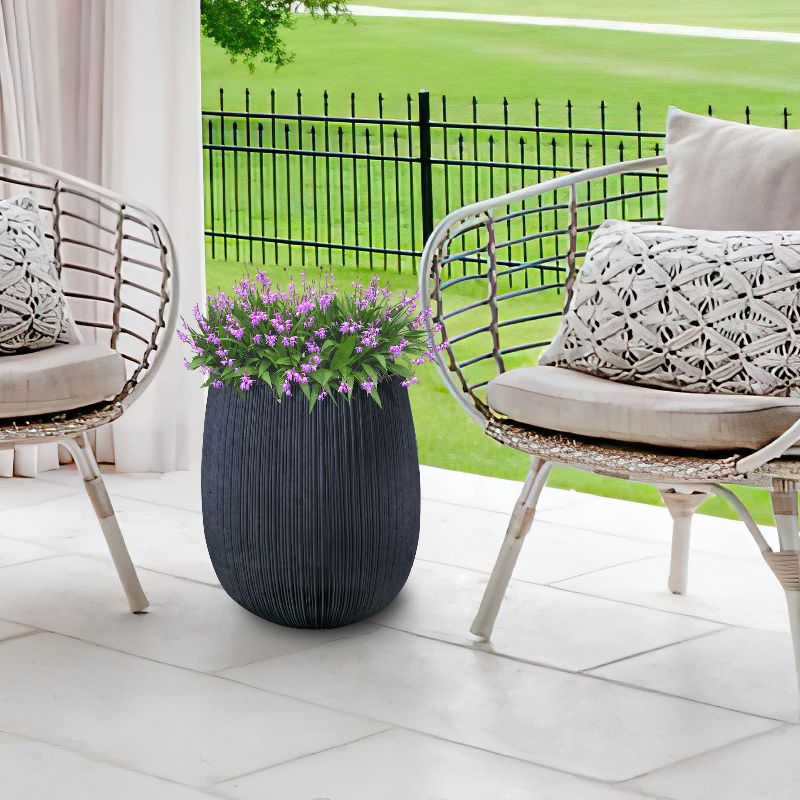Choosing the right planter material is critical for plant health, aesthetics, and durability. With a variety of options available, each material has its advantages and drawbacks depending on the plants you wish to grow, the climate, and your personal preferences. This article compares some of the most popular planter materials—clay, ceramic, plastic, metal, wood, and concrete—to help you make an informed decision.
Key Factors to Consider
Before diving into the comparison, consider the following factors when choosing a planter material:
Durability: How long the planter will last and its ability to withstand environmental conditions.
Weight: Heavier planters can offer stability but may be harder to move.
Drainage and Aeration: Proper drainage prevents root rot, and aeration is essential for root health.
Insulation: The material’s ability to regulate temperature and protect plants.
Aesthetic Appeal: How the planter complements your space and plants.
Cost: Affordability of the material.
|
Material |
Durability |
Weight |
Drainage & Aeration |
Insulation |
Aesthetic Appeal |
Cost |
|
Clay |
Moderate |
Heavy |
Excellent |
Good |
Rustic, natural |
Low |
|
Ceramic |
Moderate to high |
Heavy |
Good |
Excellent |
Elegant, colorful |
High |
|
Plastic |
High |
Light |
Moderate |
Poor |
Versatile, modern |
Low |
|
Metal |
High |
Heavy |
Poor |
Poor |
Sleek, industrial |
Moderate |
|
Wood |
Moderate |
Moderate |
Good |
Excellent |
Natural, warm |
Moderate |
|
Concrete |
Very high |
Very heavy |
Good |
Excellent |
Rugged, modern |
High |
1. Clay Planters
Clay planters, often made from terracotta, are a popular choice for their porous nature. This material allows water and air to move through the walls, promoting healthy roots and preventing overwatering.
Pros: Excellent drainage, natural insulation, affordable, rustic appearance.
Cons: Heavy, fragile, and prone to cracking in freezing temperatures.
Best for: Indoor plants and dry-climate outdoor plants like succulents.
2. Ceramic Planters
Ceramic planters are glazed and come in a variety of colors and designs, making them a decorative favorite. Unlike clay, the glazing reduces porosity.
Pros: Aesthetic appeal, good insulation, durable when well-maintained.
Cons: Heavy, expensive, may crack with temperature fluctuations.
Best for: Decorative indoor plants and controlled outdoor environments.
3. Plastic Planters
Plastic planters are lightweight, versatile, and affordable. They come in a wide range of shapes, sizes, and colors, making them suitable for various settings.
Pros: Lightweight, inexpensive, resistant to weather, easy to clean.
Cons: Poor insulation, can overheat roots in direct sunlight, less breathable.
Best for: Budget-friendly indoor or outdoor gardening.
4. Metal Planters
Metal planters provide a modern, industrial look and are highly durable. Common materials include stainless steel, aluminum, and galvanized steel.
Pros: Durable, sleek design, weather-resistant when treated.
Cons: Conducts heat and cold, leading to potential root damage; heavy; can rust over time.
Best for: Decorative indoor use and outdoor plants in shaded areas.
5. Wood Planters
Wood planters offer a warm, natural aesthetic that blends well with outdoor environments. Cedar and teak are commonly used due to their resistance to rot.
Pros: Excellent insulation, aesthetically pleasing, eco-friendly.
Cons: Susceptible to decay without proper treatment, moderate weight, requires maintenance.
Best for: Outdoor gardens and plants that need good insulation.
6. Concrete Planters
Concrete planters are known for their extreme durability and modern design. They are a long-term investment due to their ability to withstand harsh weather conditions.
Pros: Very durable, excellent insulation, modern aesthetic.
Cons: Extremely heavy, expensive, and not ideal for frequent relocation.
Best for: Large outdoor plants and landscaping projects.
Choosing the Right Material
The ideal planter material depends on your specific needs:
For Mobility: Choose plastic or lightweight metal for easy movement.
For Durability: Concrete and treated wood last the longest outdoors.
For Aesthetics: Ceramic and metal offer elegant and modern designs.
For Budget: Plastic and clay are the most cost-effective options.
Tips for Maintenance
Clay and Ceramic: Avoid exposure to freezing temperatures. Use a sealant for ceramic planters if necessary.
Plastic: Clean regularly to prevent algae buildup.
Metal: Apply a rust-proof coating for outdoor use.
Wood: Treat with water-resistant finishes and line the interior with plastic to prevent rot.
Concrete: Allow new concrete planters to cure fully before planting.
Conclusion
Understanding the strengths and weaknesses of planter materials helps ensure your plants thrive while aligning with your aesthetic and functional needs. Clay and ceramic suit classic styles, while plastic and metal cater to modern spaces. Wood and concrete are ideal for outdoor use due to their natural and rugged appeal. By considering factors like durability, weight, and insulation, you can find the perfect planter to enhance both your plants' health and your space’s visual appeal.





